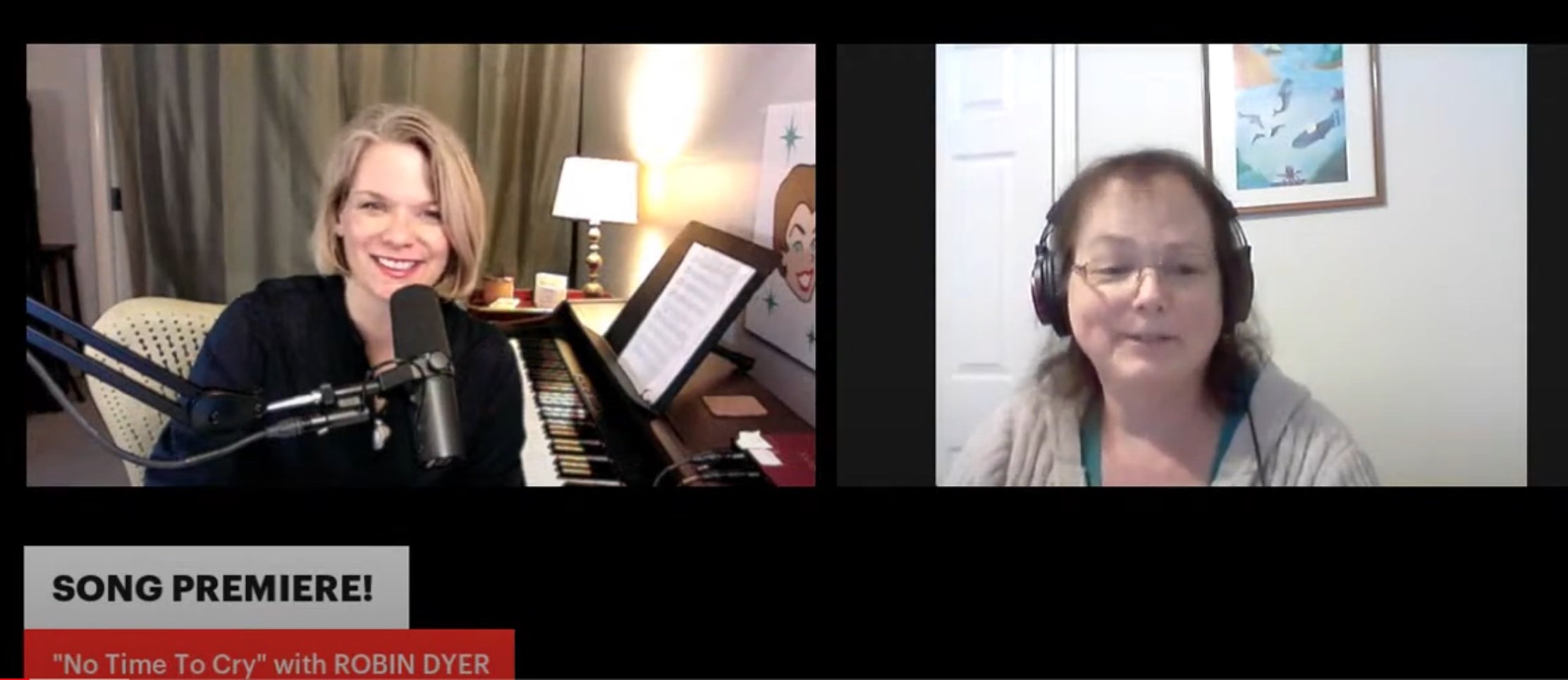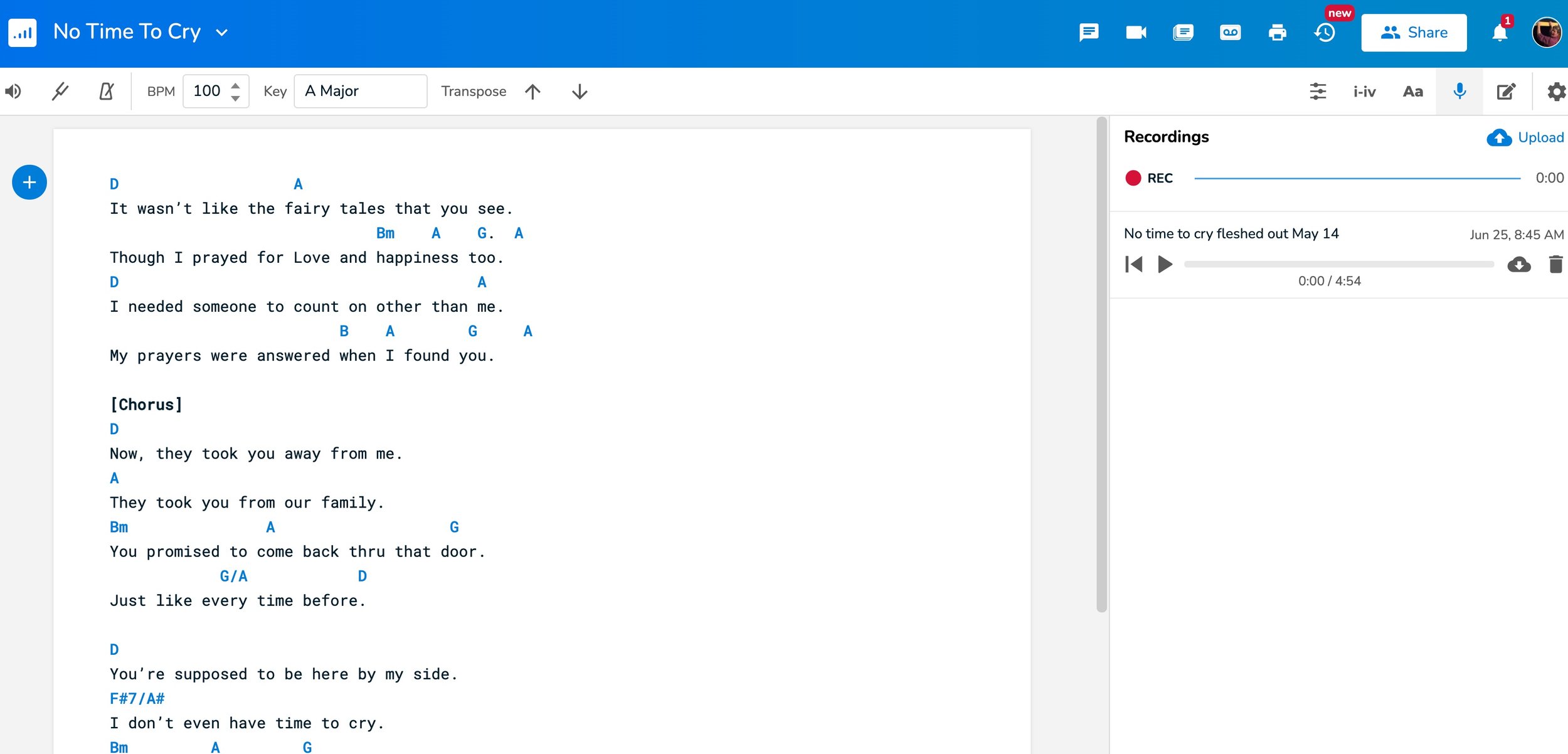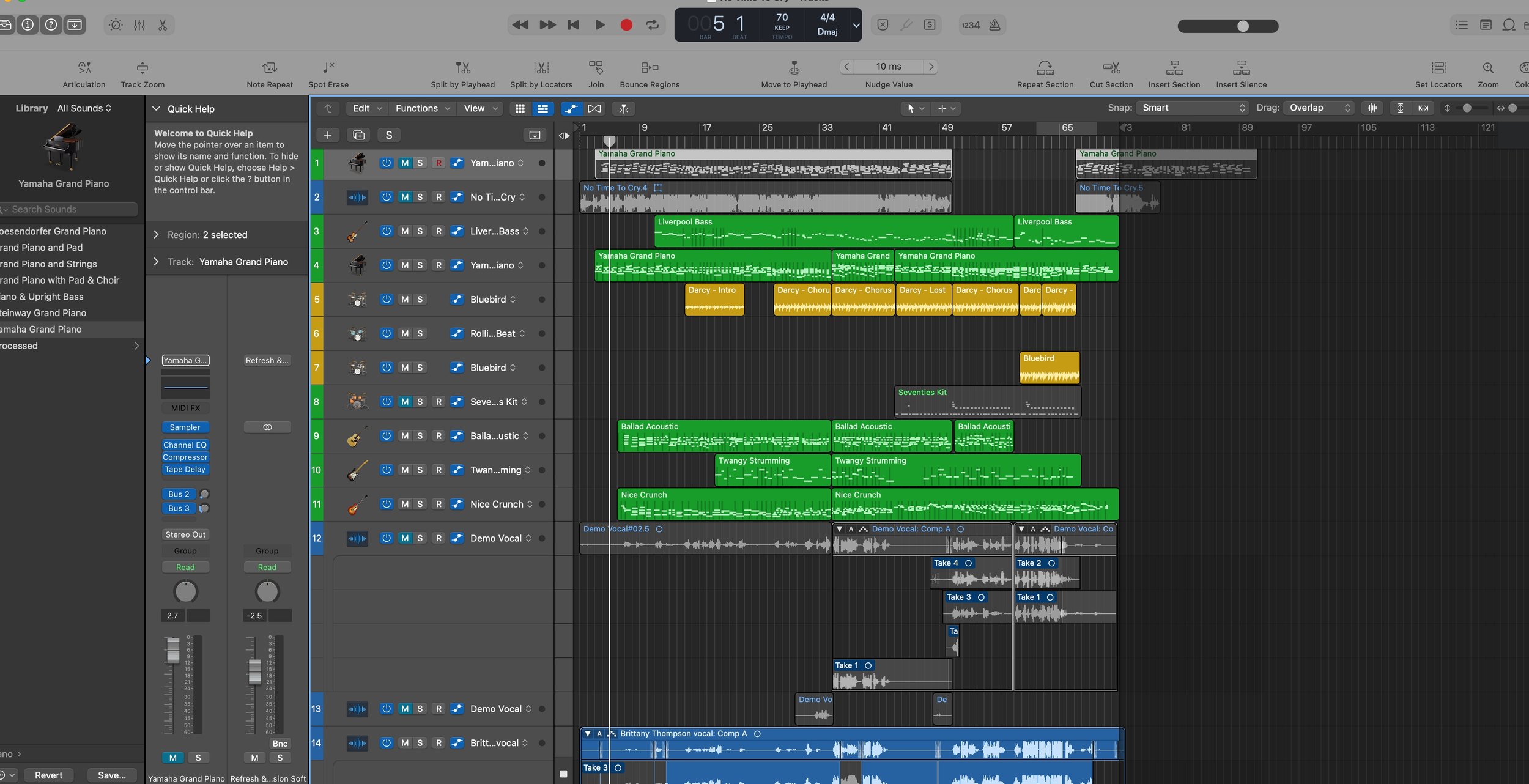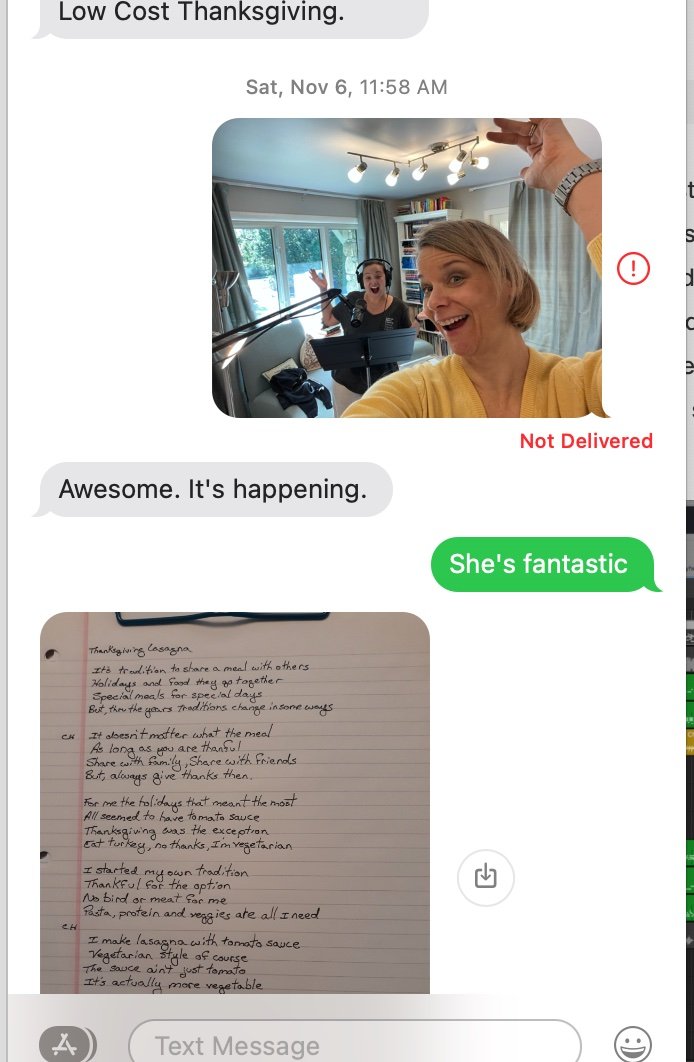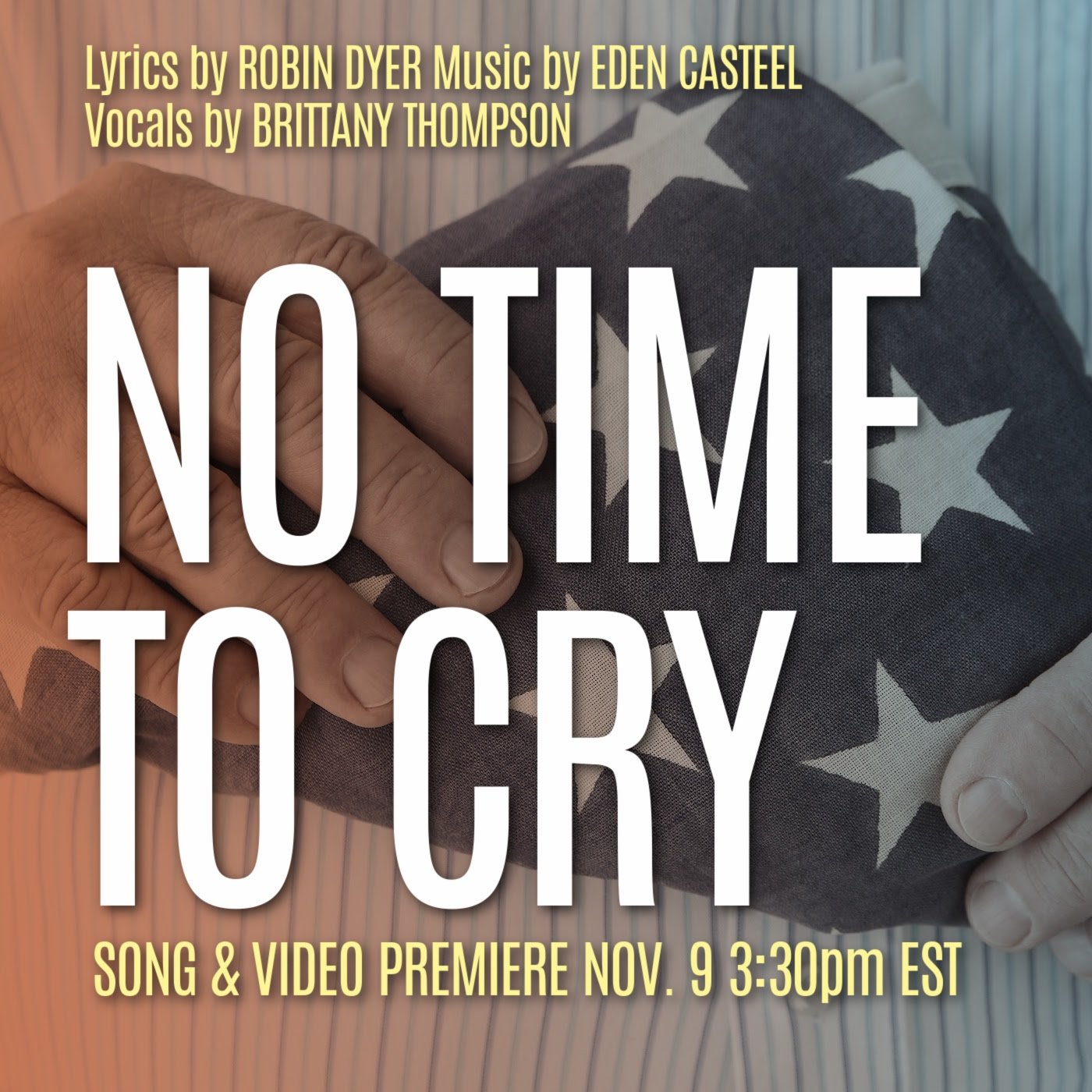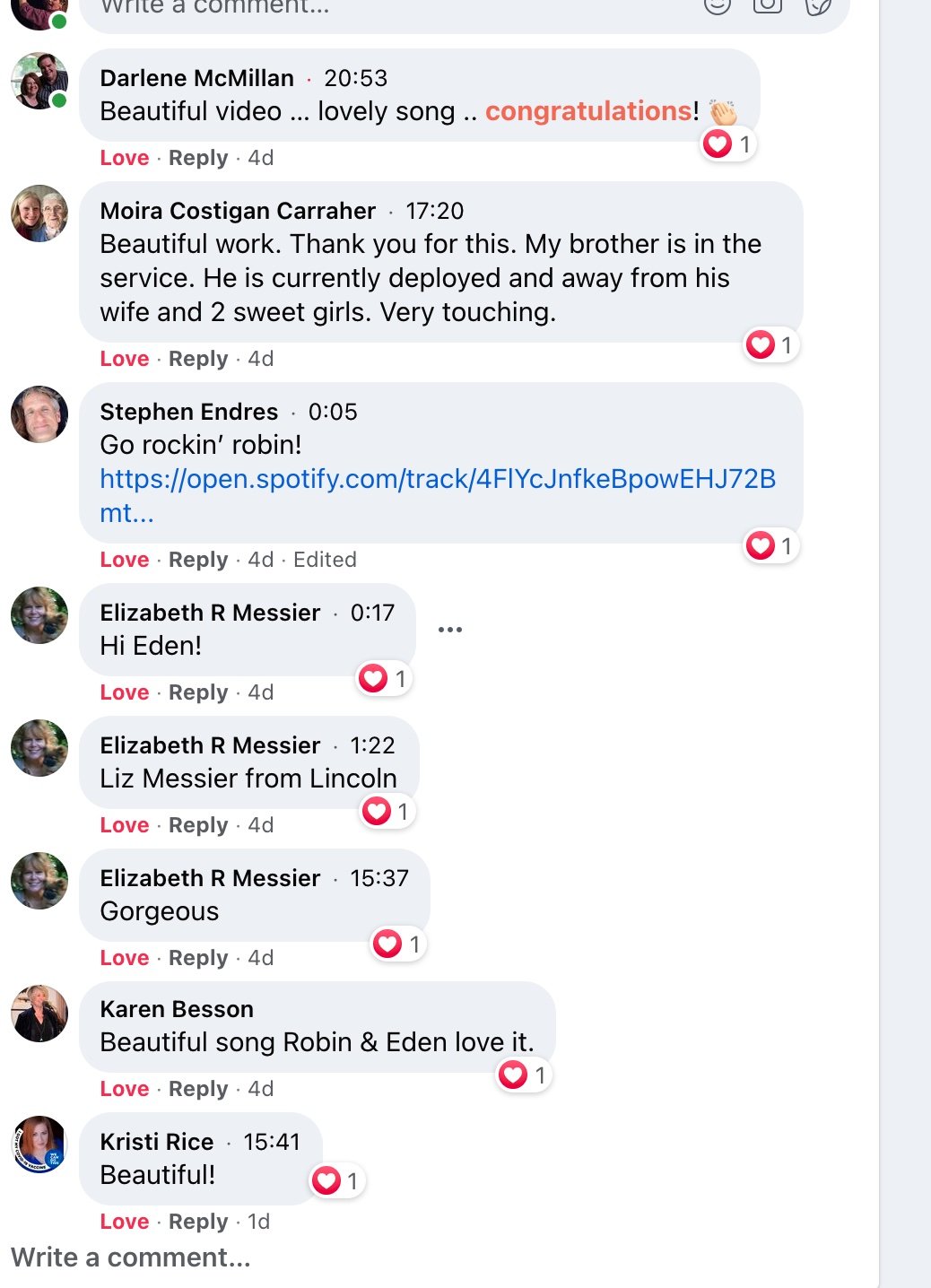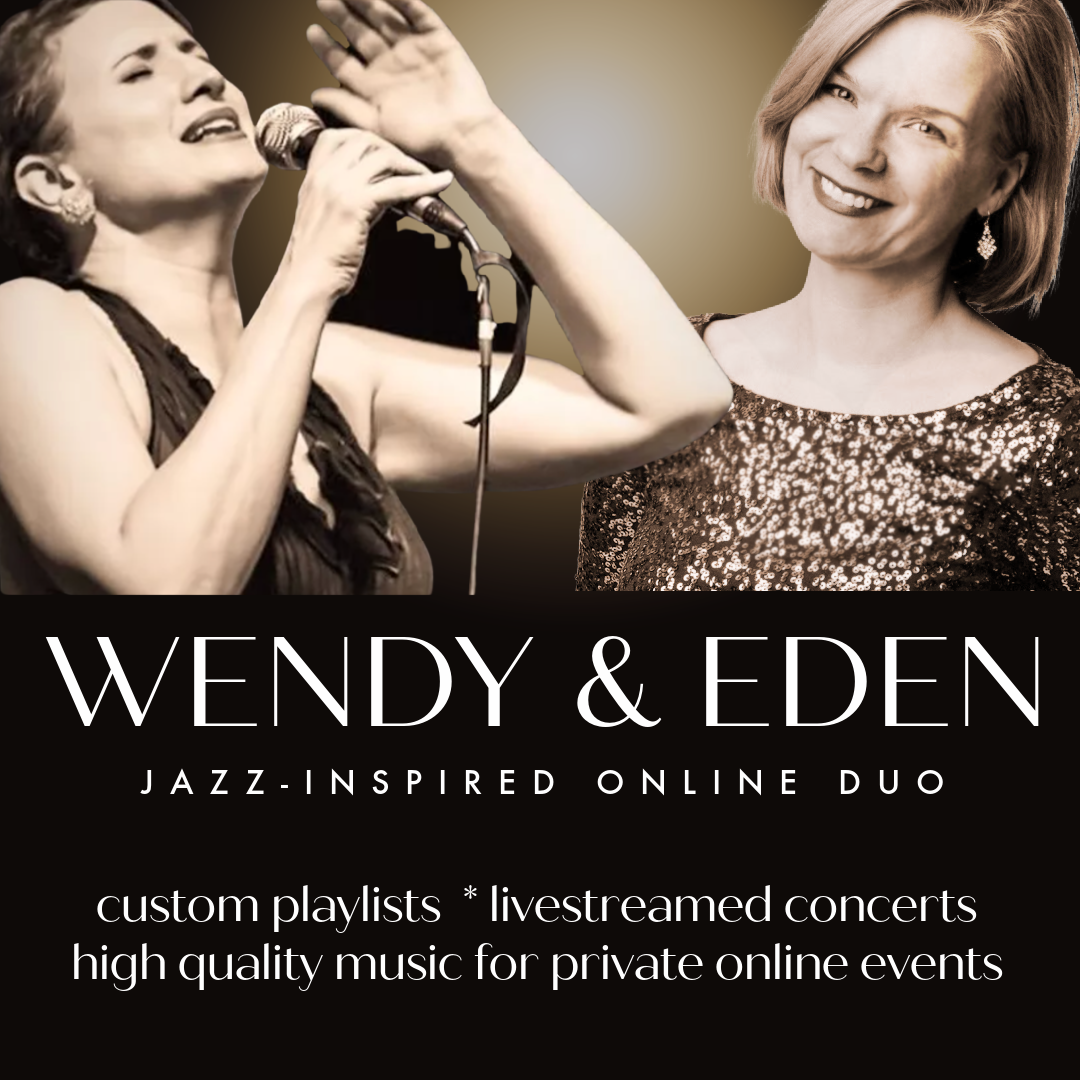Hey kids! Let’s put on a livestreamed, interactive weekly musical variety show!
Read MoreIt'll never be perfect: Write songs anyway
“It’s easy! Anyone can do it!” . . . but if it’s so easy, why is songwriting so hard? . . . .
Hel-lo. We are imperfect human beings, but somehow we think songs have to be perfect in order to be shared. So, let me tell you about the imperfect creation and release of Robin’s latest song! (Watch No Time To Cry right here)
Robin has performed in a few of my showcases, but as soon as the pandemic hit, she went headlong into songwriting. She loves a lot of different styles of music and writes about a variety of things. Every time she completes a song, she takes a photo of the paper (she writes in longhand) and sends it to me, and we talk about them at our weekly sessions. I’m always amazed to get these beautifully handwritten lyrics, but she assures me, they’re not perfect. “You don’t see all the other papers,” she says. She has shown me how much paper and ink she goes through as she’s writing!
“Folded Flags” was a song Robin wrote last spring. She said it took her less than a day. (She writes about one song per day now, sometimes more! Up to FIVE songs in a day! “I’m making up for all the years I didn’t write anything,” she says.)
She writes so much that she’s basically in “writing mode” more often than not, so it’s comfortable for her to write. She always knows more words are coming, so she’s not as fixated on getting the words out perfectly. That’s a hint to the rest of ya.
Robin shared the lyrics with me at our weekly meeting. I was sitting at my keyboard and in the same hour I came up with the piano melody and a vocal line for the verses. That’s right — I just sat down at the piano and started playing something that sounded, to me, like a heartrending ballad. We both liked it. We knew we could change it whenever we wanted. That took the pressure off of being perfect. Overall, I choose melodies like wedding dresses — the first choice is often one of the best choices, even if you have a million options.
To keep us from forgetting what we liked, I recorded my musical ideas using Voice Record Pro, an app for my iPhone. I shared the audio track with Robin so we could both keep thinking about it, but we knew from the outset that it was a good lyric and the chords were lining up pretty well. We didn’t overthink it.
A few weeks later, we came back around to the song. “It it Folded Flags or No Time To Cry?” I asked her, not sure what the title would be. We went back and forth on the title for months. I mean I did! Robin thought it was funny that I couldn’t remember the title of the song we both liked. But I remembered the chorus: “They took you away from me, they took you from our family . . .” that stood out to me as a hook.
I typed the lyrics into an online program called Songcraft.io. I uploaded our original musical recording to Songcraft as well. I use this program to store a lot of Robin’s song ideas as they get built out into complete demo tracks.
Outside of Robin’s lesson time, I listened to my own original recording and started transcribing the chords above the lyrics, to create a chord sheet in Songcraft. I didn’t transcribe the vocal line, just the chords — kind of like a musical sketch.
Then, we talked about who might sing this country-esque song about a family who’s lost a loved one in war. I remembered that I had a former student who had served in the military, but was also a fantastic singer who had been a runner-up for a local singing competition. I decided to keep Brittany’s voice in mind as we created the vocal.
More weeks went by, and we kept revising the song a little at a time while working on other tunes. Robin usually writes lots of verses, and then I help her edit out what’s superfluous or redundant, until we’re left with a good lyric. I’m the sounding board as well as the music arranger.
We turned one of the verses into a bridge and I tried out a few different kinds of vocal lines for this different part of the song. I demonstrated a few bridge ideas for Robin during our Zoom meetings until we got to one we both liked.
Finally we decided it was time to get the song to a demo stage — get it sounding good enough to share. Did that mean I would play piano and have the guest singer just sing along with me? No, I wanted it to sound more “produced.” So, I opened up Logic Pro X and created a demo track. I used Logic’s drum loops, and played “bass” and “guitar” using my old Technics keyboard with a MIDI connection. I had to go back and re-record some of the electric drums to add in some fills here and there'; that to me is the most tedious part of creating a demo track. It was not perfect, but I knew it was steady enough that our singer could record to it.
Then, I sang the vocal line as I thought it should go. Finally, I sent it off to Robin to make sure it sounded like she wanted it to. She asked me to change some parts and add on some additional instrumental time after the bridge, so I did. Then it was ready.
I sent off the track and the lyrics to Brittany, asking if she would record the track — and she said yes!! Two weeks later she was in my studio, singing the song about six times total. She added a few of her own embellishments to the vocal, all of which we liked.
I texted Robin while we were recording!!! And of course Robin sent back new song lyrics she' was working on. ;)
With the recording done, I did a little post-production. I compressed the vocals and added a little reverb, and listened to the whole track carefully to make sure there were no glaring stray rim shots or clashing sounds in the accompaniment. Did it sound like Mark Ronson produced it? No. Did it sound good enough to share? Yes.
Then, Robin and I decided how to share the track. Even though the song could have been released to SoundCloud as an audio-only track, I decided to create a lyrics video. I used copyright-free, royalty-free images I found online, and strung them together in Final Cut Pro. Then I typed in Robin’s lyrics so the focus would be on the story she wrote. It took me about four hours to put together the video, working off and on during a busy day at home.
Last but not least, I did a little PR for the song. I created some graphics using PicMonkey, and shared them on my socials and to my studio newsletter list.
Finally, it was time for the premiere! I had uploaded the video to YouTube and kept it unlisted until we passed our official premiere. Robin and I got online together via Restream.io, talked about her track, and then I played the video. The comments were immediate and heartfelt . . which made both of us so happy!
So, to recap, here’s what we did, imperfectly, to release No Time To Cry:
Robin wrote a lot of words!
Eden added music, starting with some piano and then adding a vocal melody to Robin’s lyrics.
We recorded the musical ideas in Songcraft so we could find them again later. I transcribed my own music by adding chord symbols to the lyrics.
I created a demo track using my studio MIDI keyboard, and Logic Pro X.
I shared the lyrics and the demo track with our designated singer.
The singer, Brittany, came to my studio to record her vocal and I did a little tidying up of my audio tracks.
At every point of the process, Robin had opportunity to make suggestions and comments, and I changed or adapted things to suit her vision.
I created a lyrics video with some stock video, to accompany the song.
I announced the release on social media.
Robin and I livestreamed her “premiere” on YouTube and Facebook.
I look at that list of actions and think, “Wow, we did all that.” But that’s what it takes to release a perfectly imperfect song. What would I do differently to make it better? Release to SoundCloud or Spotify? Copyright the song and send to ASCAP? Yep. Use different graphics and video editing programs? Use Pro Tools instead of Logic? Add live instruments? Sure. We’ll probably copyright the song and register it with ASCAP very soon. And who knows? We might re-record it down the road.
But overall, I’m pretty happy, and so is Robin. It’s wonderful to know that her lyrics now have a life off of the page! We already have another singer and song ready to record in a month.
Kind of a Big Deal
I was this many years old when I figured out how to livestream with a jazz singer who lives about 900 miles away from me.
Why is this a Big F_____ Deal?
To the best of our knowledge Wendy Jones and I are the first who’ve successfully played live and shared live, from such a distance. So, we think it probably IS a B.F.D!
We know of no other pair of musicians who’ve done what Wendy and I did on Saturday night. Lots of players livestream by themselves or with their COVID-free bandmates from a single location (Billie Eilish!), and lots of distanced players pre-record their playing (virtual choirs!), edit the audio and video, and upload it to socials. We’ve done plenty of both. (Shameless plug for this playlist.)
It means (at least!) two musicians can play together, in real time, and can also send their music out to viewers on YouTube, Twitch, Facebook Live and other channels. It means that even in the darkest days of a pandemic, distance is no obstacle to playing live with your friends and sharing it with the world. Concertizing is available right now. This makes us feel great now, but we predict it’s gonna be reaaaaalll useful for the rest of our careers.
Musicmakers everywhere: Let’s play NOW!
Jazz singer and teacher Wendy Jones has been my tech partner-in-crime since summer. She’s a fantastic singer! She’s based in Hendersonville, North Carolina, 889 miles away from me in Wakefield, Rhode Island. Sitting at home during the pandemic, we started reading about SoundJack and other low-latency music options. We talked to each other in a teacher group called The SpeakEasy Cooperative, and we decided to see if we could connect to each other, even from such a long distance. TL; DR: It worked!
1. This was our first experiment, using Cleanfeed to see if we could collaborate with each other in real time. (Thousands of miles apart? Uh, no. Math is hard). I recorded our session, threw it into Final Cut Pro with some still photos, and released our results.
2. This was our second experiment, using SoundJack to speed up our connection. This time we each recorded video in our own studios, and I recorded the audio to my computer’s hard drive. And I put it all together in Final Cut Pro. It worked . . again!
3. Emboldened by our success, we added a third singer to our SoundJack experiments — Dr. Amy Stewart in Fort Worth, TX. And It worked again. This time, I recorded my screen video using QuickTime and threw that into Final Cut Pro.
Wendy and I then began to test our tech with other people, constantly sharing our results with each other (and on my YouTube channel! Go subscribe!) We wondered if it would be possible to livestream our low-latency music sessions, rather than record, edit and upload them. Could our tech handle it? Yes, yes it could!
Was Saturday night’s “live rehearsal” perfect? No. I had to ask my desktop Mac to give me quality video, excellent audio, and then bounce it all live into a different platform. We had some difficulty hearing each other at times, and viewers told us that sometimes there was a faint echo, or it was difficult to hear my piano (which sounded really loud to me, live!). This is a lot to ask of any consumer-level tech.
But you bet your bippy I’m going to keep asking my tech to make the impossible possible. Wendy and I have music to make! Subscribe to get notified when Wendy and I do our next Long-Distance Livestream!
